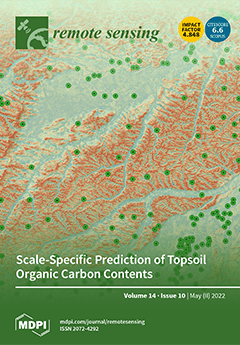In situ hyperspectral remote-sensing reflectance (
) is used to derive water quality products and perform autonomous monitoring of aquatic ecosystems. Conventionally, above-water
is estimated from three spectroradiometers which measure downwelling
[...] Read more.
In situ hyperspectral remote-sensing reflectance (
) is used to derive water quality products and perform autonomous monitoring of aquatic ecosystems. Conventionally, above-water
is estimated from three spectroradiometers which measure downwelling planar irradiance (
), sky radiance (
), and total upwelling radiance (
), with a scaling of
used to correct for surface-reflected radiance. Here, we incorporate direct and diffuse irradiance, (
) and
), from a hyperspectral pyranometer (HSP) in an
processing algorithm from a solar-tracking radiometry platform (So-Rad). HSP measurements of sun and sky glint (scaled
and
) replace model-optimized terms in the 3C (three-glint component)
algorithm, which estimates
via spectral optimization of modelled atmospheric and water properties with respect to measured radiometric quantities. We refer to the HSP-enabled method as DD (direct-diffuse) and compare differences in
and
variability (assessed over 20 min measurement cycles) between 3C and DD as a function of atmospheric optical state using data from three ports in the Western Channel. The greatest divergence between the algorithms occurs in the blue part of the spectrum where DD has significantly lower
variability than 3C in clearer sky conditions. We also consider
) processing from a hypothetical two-sensor configuration (using only the
spectroradiometer and the HSP and referred to as DD2) as a potential lower-cost measurement solution, which is shown to have comparable
) and
) variability to DD in clearer sky conditions. Our results support that the HSP sensor can fulfil a dual role in aquatic ecosystem monitoring by improving precision in
alongside its primary function to characterize aerosols.
Full article





